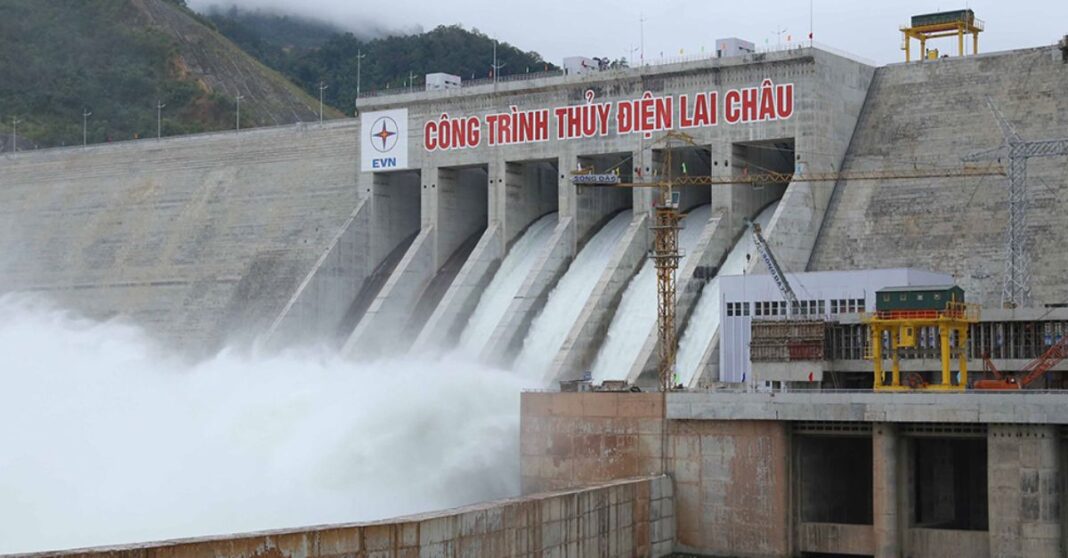Two out of the three largest hydropower dams in Vietnam, Son La and Lai Chau are reported to be at dead water levels, leaving Hoa Binh Reservoir as the only dam with enough water to generate electricity.
In the early days of June, Son La Hydroelectric Reservoir recorded water levels 30-40 meters below the permitted figure of 215 meters above sea level.
Mai Duc Tiep, a supervisor at Son La Hydroelectric Plant, stated that since operations began in 2010, this is the first time that water in the reservoir has dropped to record lows, forcing the plant to operate below the dead water level of 175m.
He said, “In the past few, scorching hot days, all six turbines were operational. However, in recent days, the turbines have almost stopped operating, and if they can run, it is very limited because the reservoir has reached the dead water level.”
He also pointed out that six engineers are working round the clock to keep the turbines in a state of readiness to generate power when required.
“Under normal conditions, the turbines are inspected once every two hours. However, when operating below the dead water level, inspections need to be conducted every hour or every 30 minutes to ensure that everything is in good working order and ready to supply electricity to the grid upon demand,” added Mai Duc Tiep.
Around 300 km upstream from the Son La Hydroelectric Plant, the Lai Chau Hydroelectric Plant is almost non-operational as it has fallen below the dead water level by 5 meters.
Khuong The Anh, director of Son La Hydroelectric Company, told Tuoi Tre (Youth) newspaper, “This is the first time that both the Son La Hydroelectric Plant and the Lai Chau Hydroelectric Plant have been operating below the dead water level.”
In 2022, the monsoon season in the river basin ended early, resulting in decreased water storage in the reservoirs. Especially in the first few months of 2023, the river inflow to the two reservoirs was only 51% compared to the same period in 2022, according to The Anh.
The lack of water accumulation in the 11 reservoirs in China, has also significantly decreased water inflow into the Son La and Lai Chau reservoirs.
Currently, only the Hoa Binh Hydroelectric Plant is functioning in the Da River’s hydropower system, capable of supplying electricity.
Although all eight turbines are ready for operations, the plant has to adjust its operations according to the system’s demands, depending on the level of water in the reservoir. During peak hours, the plant can generate a maximum capacity of 1,920 MegaWatts, while at other times, the output is lower.
On 8 June, the Hoa Binh reservoir water level was only 103.45m, a decrease of approximately 6 meters compared to six weeks prior, while water inflow to the reservoir currently clocks in at 40 cubic meters per second.
“Given the current situation, we are coordinating with the National Power Dispatch Centre and are ready to operate according to the system’s requirements,” said Pham Van Voung, the director of the Hoa Binh Hydroelectric Company.
He also stated that if the plant continues to function at its peak capacity, the Hoa Banh reservoir will reach a dead water level (80m above sea level) in about 12-13 days.



